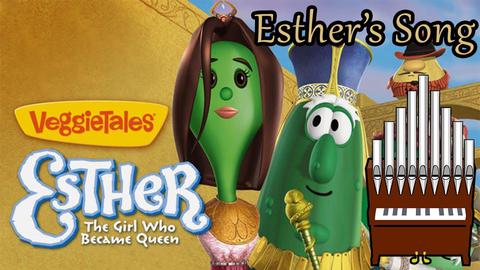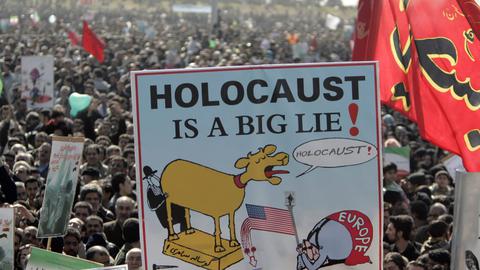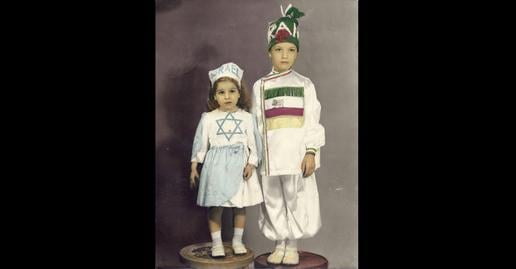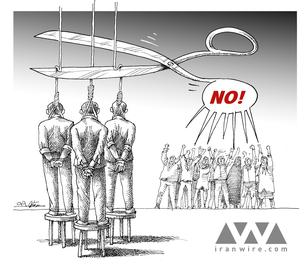There is no shortage of front page-worthy news in Iran these days. The country is in the midst of the worst economic crisis in its history, it is battling a horrendous pandemic, it has weathered a series of mysterious explosions and continues to hang political prisoners, leading to protest and dissent.
But a leading news agency linked to the regime’s Islamic Revolutionary Guards Corps (IRGC) has chosen to run a 1600-word story on a wholly different topic: the online streaming of a children’s animation film, featuring anthropomorphic vegetables and a biblical story taking place in ancient Persia.
On July 15, in article authored by Nayime Movahed, the IRGC-linked Fars News Agency proclaimed that “a Zionist hero has infiltrated our streaming services”. It was referring to the animation movie “{{ __192422_videocomponent__video component__ }}">Esther: The Girl Who Became Queen”, which is part of the award-winning American Christian children series VeggieTales.
Based on goofy retellings of the stories from the Bible, the VeggieTales series debuted in 1993 and ran on and off for more than two decades. The Esther episode that has caused the ire of the Iranian regime dates back to 2000. With their pre-CGI animation and their 1990s style, VeggieTales belongs to a different era. It was once big on now-defunct VHS tapes. But in the age of streaming it has found new audiences, including apparently in Iran.
“Esther” was originally dubbed to Persian in 2011, led by the voice actor Anita Qalichi, whose masterful work includes dubbing of the animation Frozen films. It was broadcast on Iranian state TV before being pulled due to “numerous protests,” according to Fars. But the animation is now available both on Filimo (something of an Iranian Netflix) and on the streaming outlets of the same organization that did the dubbing in the first place: The Sureh Institute, which is part of the Islamic Propagation (Development) Organization, a body directly linked to the Supreme Leader’s office.
So why is a media outlet linked to the IRGC accusing a cultural body linked to Ayatollah Khamenei of engaging in Zionist propaganda?
It all goes back to a well-known, and well-abused, story in the Bible.
Purim: Persians and Jews in the Bible
The Old Testament story of Esther, to which an entire book of the Hebrew Bible is dedicated, has long been used to celebrate the ancient ties between Persians and Jews – while also abused by others to foster both antisemitic or anti-Iranian sentiments.
The story itself is straightforward. It takes place in Susa, a capital of the Persian Empire during the Achaemenid dynasty that ruled Iran before the invasion of Alexander the Great’s Greek armies in 4th century BC. The Bible names the king as Ahasuerus, but most historical scholars agree that this is a Hebrew rendering of Xerxes I, a grandson of Cyrus the Great, who reigned from 486 to 465 BC. The story’s hero, Esther, is an ordinary Jewish orphan girl in the empire, who catches the eye of the king and marries him. Finding out about the plots of Xerxes’s evil minister, Haman, who aims to destroy the Jewish people, Esther joins up with her cousin, Mordecai, to sack Haman and save her people. The Bible asks the devout to celebrate this holy occasion that saved Jews from a genocide by exchanging gifts and eating good food.
Jews have followed this Biblical call down the centuries. The feast of Purim, which celebrates the old story, remains a popular occasion in Israel and in Jewish households around the world. It has been turned into something of a Halloween, with youngsters dressing up as all sorts of characters (your correspondent, a non-Jewish Iranian, has fond memories of reveling in street Purim celebrations in Tel Aviv last year — he didn’t even mind some Israeli friends calling him Ahasuerus).
It is clear that the Purim story celebrates Persian-Jewish partnership. All the good characters are Persian and Jews, whereas the evil Haman is neither. He a descendant of Agag, the infamous king of the Amalek, known in the Arabic tradition as Yajuj. It is thus not surprising that the story has long been used to foster Iranian-Jewish friendship, not least by the Jews of Iran. A purported tomb for Esther and Mordecai is a major tourist site in the Iranian city of Hamedan. Built in the medieval times during the reign of a Muslim dynasty, the tomb has long been revered not just by Jews but by Iranians of all religions.
As Purim falls close to Nowruz, the Iranian new year holidays, there has even been joint celebrations, both in Iran and in diaspora communities such as those in the northern Toronto suburb of Richmond Hill where hundreds of thousands of Iranians live cheek and jowl with ex-Soviet Jews.
The Esther story is, of course, not the only case study in Iranian-Jewish friendship in the ancient world. The more obvious case predates the Book of Esther stories by about a century. In 539 BC, the Persian king Cyrus the Great conquered Babylonia and freed the Jews who had been held captive there for 66 years following their expulsion from Jerusalem by the legendary Babylonian king Nebuchadnezzar. Jews were thus able to return to the holy city and rebuild their temple in the ancient land of Israel before being kicked out again by the Romans a few centuries later.
But in the context of the Iran-Israel conflict, demagogues have attempted to twist the facts in the Esther story to foster hate. This April just gone, Tehran’s Young Journalists’ Club, run by Iran’s mammoth state broadcaster, claimed that Purim was “a celebration of killing Iranians.”
“The Jews continue to celebrate the genocide of Iranians by dressing up as characters of the story,” the YJC’s anti-semitic story read. “The modern form of Purim is the massacre of Palestinians driven from their homes, killed by the Zionist militias.”
In another report in March, the same outlet claimed that Purim celebrated a “Holocaust of Iranians” in which “half the population of Iran are killed.” This claim is also a favorite of the notorious American white supremacist and former Grand Wizard of the Ku Klux Klan David Duke. Duke’s attack on “The Purim Celebration of Hate” has been subtitled in Persian and is promoted by pro-regime online channels. The abuse is not limited to the online world; there has been several attempts to destroy the Esther and Mordecai temple in Hamedan. A local branch of the IRGC’s volunteer wing, the Basij, even proposed turning it into a Palestinian consulate.
In contrast, Israel’s foreign ministry officially celebrates Purim as a reminder of the long ties between Iranians and Jews, including in its output in Persian. But the right-wing prime minister, Benjamin Netanyahu, has also been known to opportunistically twist the facts of the story to further his agenda. During Purim in 2017, he asked a group of school children “who wanted to kill us?” And when they said “Persia”,” he went on to say: “Today in Persia they also want to destroy us.” The prime minister failed to mention that none of the villains of the story are actually Persian/Iranian.
Vegetable Esther Helps Occupy Palestine?
The IRGC and Netanyahu both seem to revel in conflating Haman with Iran. Fars’s attack on the animation claims that Haman represents Iran. It attacks those who dubbed and broadcast the animation as polluting the mind of Iranian children, leading them to consider “Esther to be beautiful and lovable, Mordecai to be smart and a warrior and Haman to be lowly and evil.”
“This is a historical fabrication that can easily mold the mind of a child,” Movahed continues. “Such a mind would be more amenable toward accepting Zionist conceptions, Judaism and occupation of the land of Palestine.”
The author also attacks the animation’s American creator, Phil Vischer, for his alleged “Israeli CV,” the only evidence for which is Vischer’s creation of an episode called “Israel Gets a King” in his “What’s in the Bible” series which clearly refers not the modern Jewish State but to the ancient and biblical Kingdom of Israel. Ironically, Vischer is anything but the caricature painted of him by Fars. In fact, in 2014, he brought to his podcast possibly the most pro-Palestinian US evangelical scholar, Gary Burge. Burge, who is a credible scholar and a minister in the Presbyterian Church, has called Israel’s action in the 1948 war “ethnic cleansing” and has criticized Israel’s treatment of Palestinians as a form of “apartheid.”
While Iran hosts one of the most vibrant Jewish communities in the Middle East, its rulers continue to use most abject forms of anti-semitism to justify their hatred of Israel. But from the long perspective of history, we can only hope that their reign will be short. Purim has been celebrated for centuries and it will be here long after the Tehran dictatorship goes. I personally can’t wait to go to a Purim in Tehran.
visit the accountability section
In this section of Iran Wire, you can contact the officials and launch your campaign for various problems



























comments